Footprints from the Stone Age: How a prehistoric volcanic eruption helped preserve remarkable evidence of daily life 13,000 years ago
Analysis of ancient footprints reveals sex-based division of labour may have taken shape over a dozen millenniums ago, David Keys explains
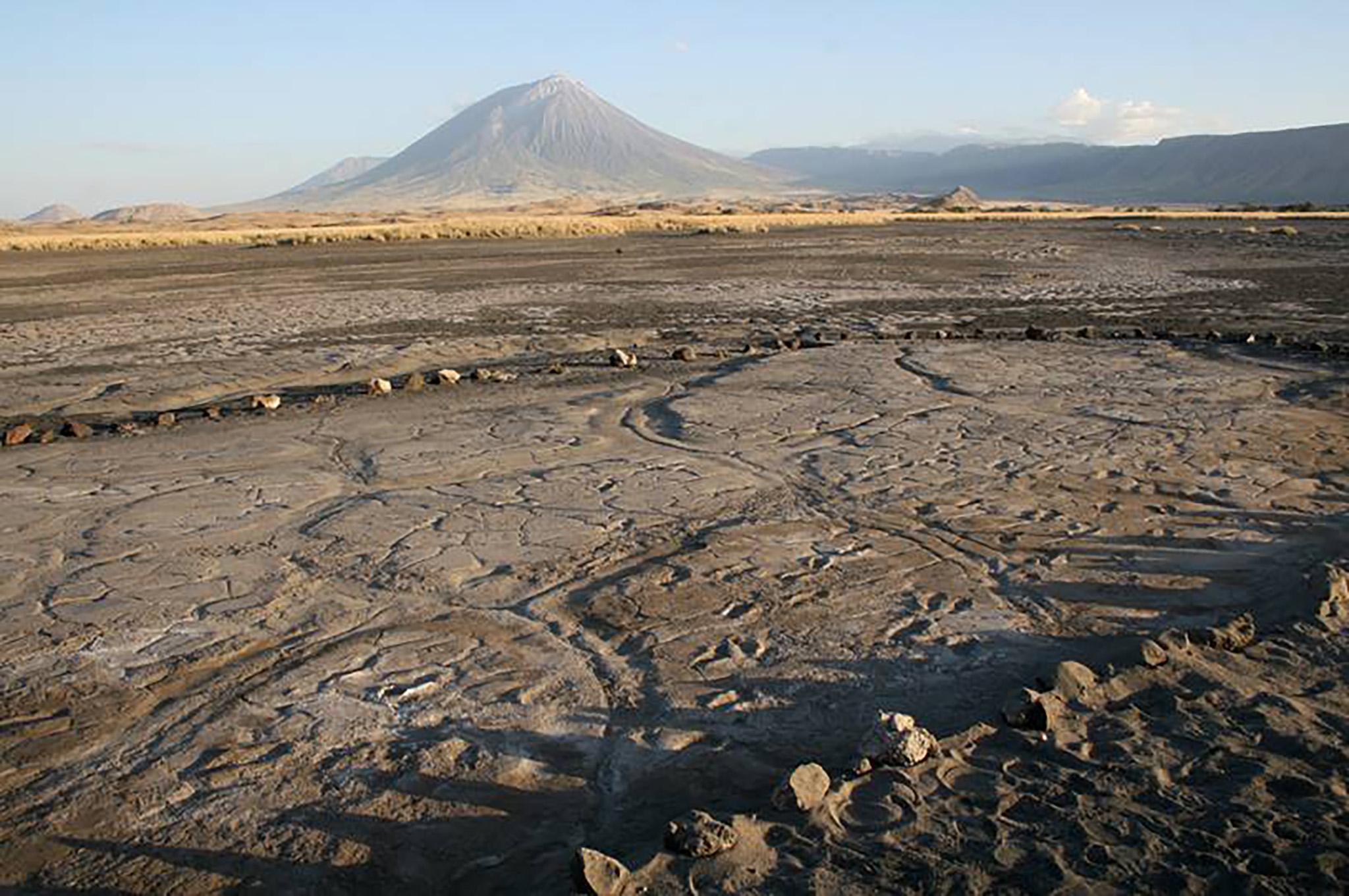
Your support helps us to tell the story
From reproductive rights to climate change to Big Tech, The Independent is on the ground when the story is developing. Whether it's investigating the financials of Elon Musk's pro-Trump PAC or producing our latest documentary, 'The A Word', which shines a light on the American women fighting for reproductive rights, we know how important it is to parse out the facts from the messaging.
At such a critical moment in US history, we need reporters on the ground. Your donation allows us to keep sending journalists to speak to both sides of the story.
The Independent is trusted by Americans across the entire political spectrum. And unlike many other quality news outlets, we choose not to lock Americans out of our reporting and analysis with paywalls. We believe quality journalism should be available to everyone, paid for by those who can afford it.
Your support makes all the difference.The long-lost secrets of a Stone Age African tribe are being revealed — courtesy of a prehistoric volcanic eruption.
Hundreds of ancient footprints, preserved in volcanic mud, are yielding extraordinary insights into daily life 13,000 years ago.
The ongoing study of the site in Tanzania is one of the most important investigations into prehistoric human behaviour and social dynamics ever carried out.
A detailed analysis of the prints, carried out by US scientists, has revealed that the sex-based division of labour, which has affected and afflicted human society for most of history, probably had its roots back in the Stone Age.
The footprints were made by between 22 and 32 people as they walked (and sometimes ran) across freshly deposited volcanic mud near the banks of a large saltwater lake in what is now northern Tanzania.
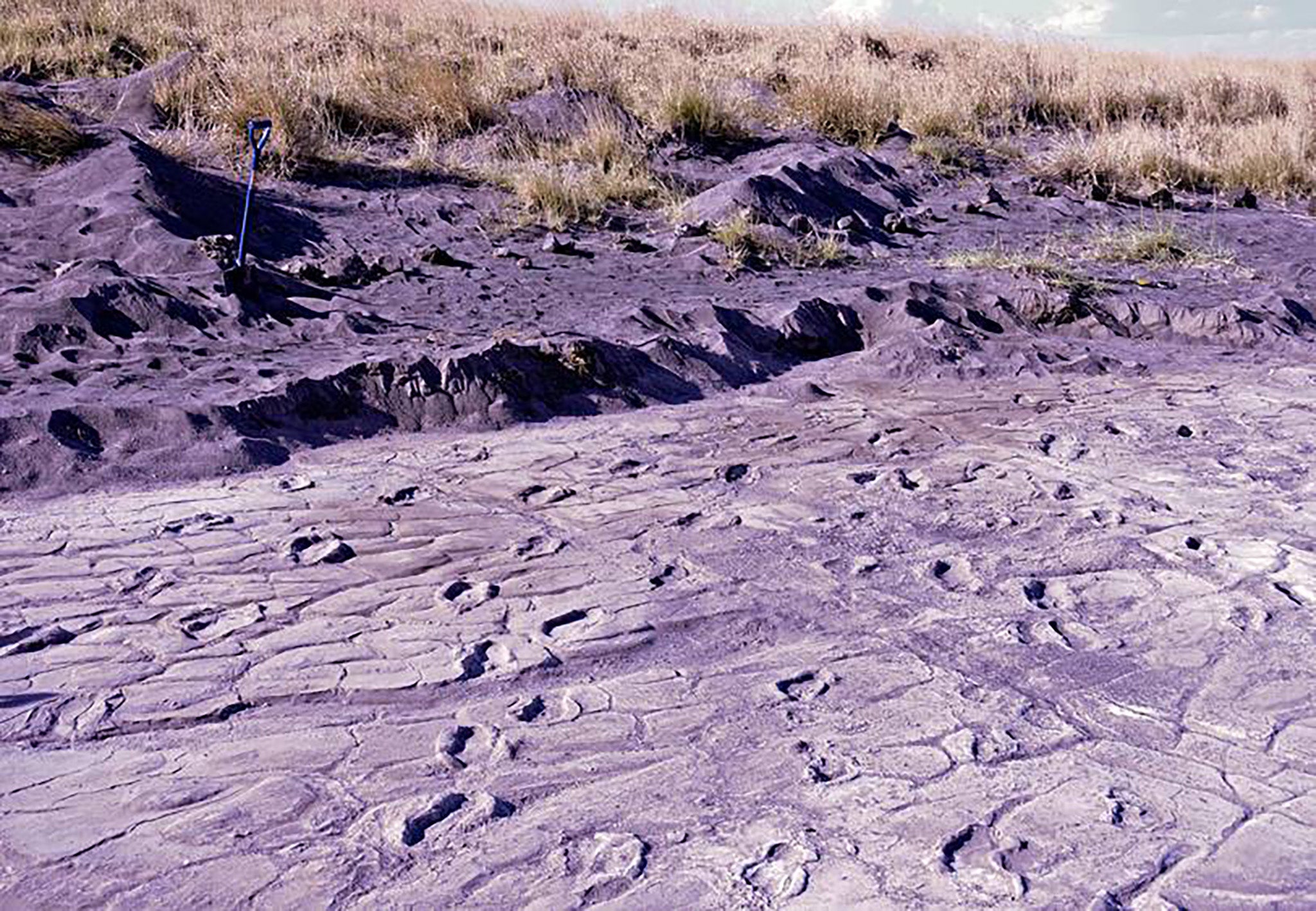
The analysis, published on Thursday by the London-based science journal Nature Scientific Reports, reveals that (apart from one lone individual) there were three groups of humans moving across this volcanic landscape, probably some time in the spring, in around 11,000BC.
It gives a series of unique snapshots of how ordinary people in that distant era interacted with each other and with their environment.
Group 1 consisted of three people (two individuals with female-sized feet and one individual with male-sized feet) walking at a fast pace away from a volcano which was either erupting at the time or, more likely, had very recently done so. As they moved rapidly across the landscape, their feet kept slipping in the volcanic mud.
Group 2 consisted of two people (one male and one female), also walking at a fast pace, away from the volcano (the still active Oldoinyo L’engai, which, translated from Maasai into English, means the Mountain of God).
Group 3 – by far the most interesting one – consisted of 14 women, two men and one probably male teenager, who were moving as a unit a few hours or a day or two after groups one and two, but at a much more leisurely pace, this time towards the volcano.
The size and nature of the group (mostly female, but with two adult males) is similar to plant-food foraging parties in some modern hunter-gatherer societies. Guided by these surviving hunter-gatherer parallels, it seems likely that, while the women were gathering food (probably edible roots), the two men’s job was to stand guard and protect them from animal predators (lions and hyenas) and from potentially aggressive buffalo.
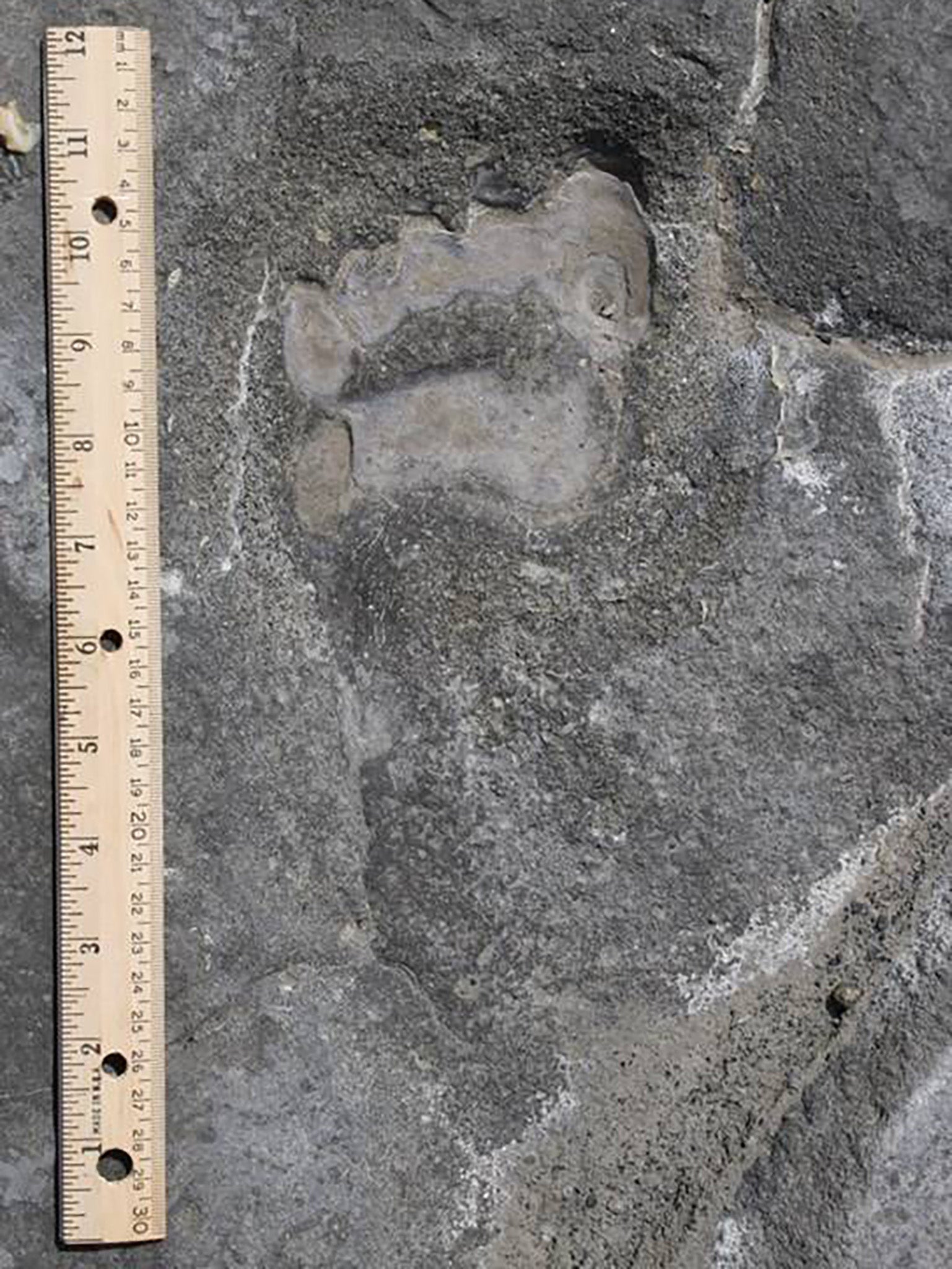
It is the first time in prehistory that such a sex-based division of labour (with women predominantly doing the plant-food gathering) has been indicated by archaeological evidence.
“The data from these ancient footprints suggest that the sex-based division of labour that we still see in many parts of the world today probably had its origins at some stage in prehistory,” said the footprints project’s scientific director, Professor Cynthia M Liutkus-Pierce of Appalachian State University in North Carolina.
The zone through which the foraging party was walking would have had plenty of plant-food resources, fresh water and even fish (because of a series of still-surviving springs and associated fresh-water ponds).
What’s more, a few metres to the south, the volcanic mud would have been too deep and treacherous, while a few metres to the north, the lake margin would have been nutritionally unproductive (because of the saline nature of the lake).
The footprint evidence suggests that at least some of the women were carrying young children. The scientists identified one instance where a child, probably aged three, was briefly offloaded by his or her carrier onto the mud before being picked up again. He or she must have simply stood there patiently waiting to be carried.
The evidence is just the toddler’s single left and single right footprints (immediately adjacent to a mass of adult female-sized prints).
The Stone Age people of East Africa – like many prehistoric people elsewhere – often favoured rock shelters and shade for their home bases. It is therefore potentially significant that the mainly female foraging party was heading directly towards the western wall of the Great Rift Valley, where rock shelters, tree cover and flowing fresh water would have been available.
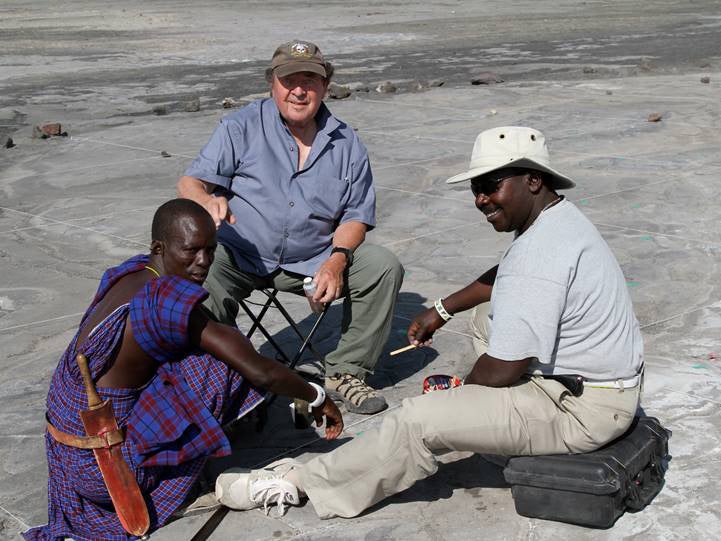
The lone individual who was actually running (rather than walking fast) was a very tall adult female who was moving at around 6.5 miles per hour across the volcanic mud.
In total, there were between 13 and 18 adult women, three to four adult men, a similar number of 16 to 18-year-olds, two toddlers (whose feet actually, albeit very briefly, touched the ground!) and up to 4 older children (aged 10-15). More precise numbers have been impossible to calculate – because of difficulties in determining the “owners” of all the prints.
These 22-32 individuals made a grand total of 408 footprints. In terms of prehistoric footprint-making individuals, it is the largest collection in the world. Even in terms of the sheer number of prints, it is the second largest in the world (the largest being at a site in Australia).
What’s more, the 316 female prints constitute the largest collection of prehistoric women’s footprints ever found anywhere in the world.
The 408 adult female, adult male, adolescent and child prints were preserved by a particularly fortuitous succession of events.
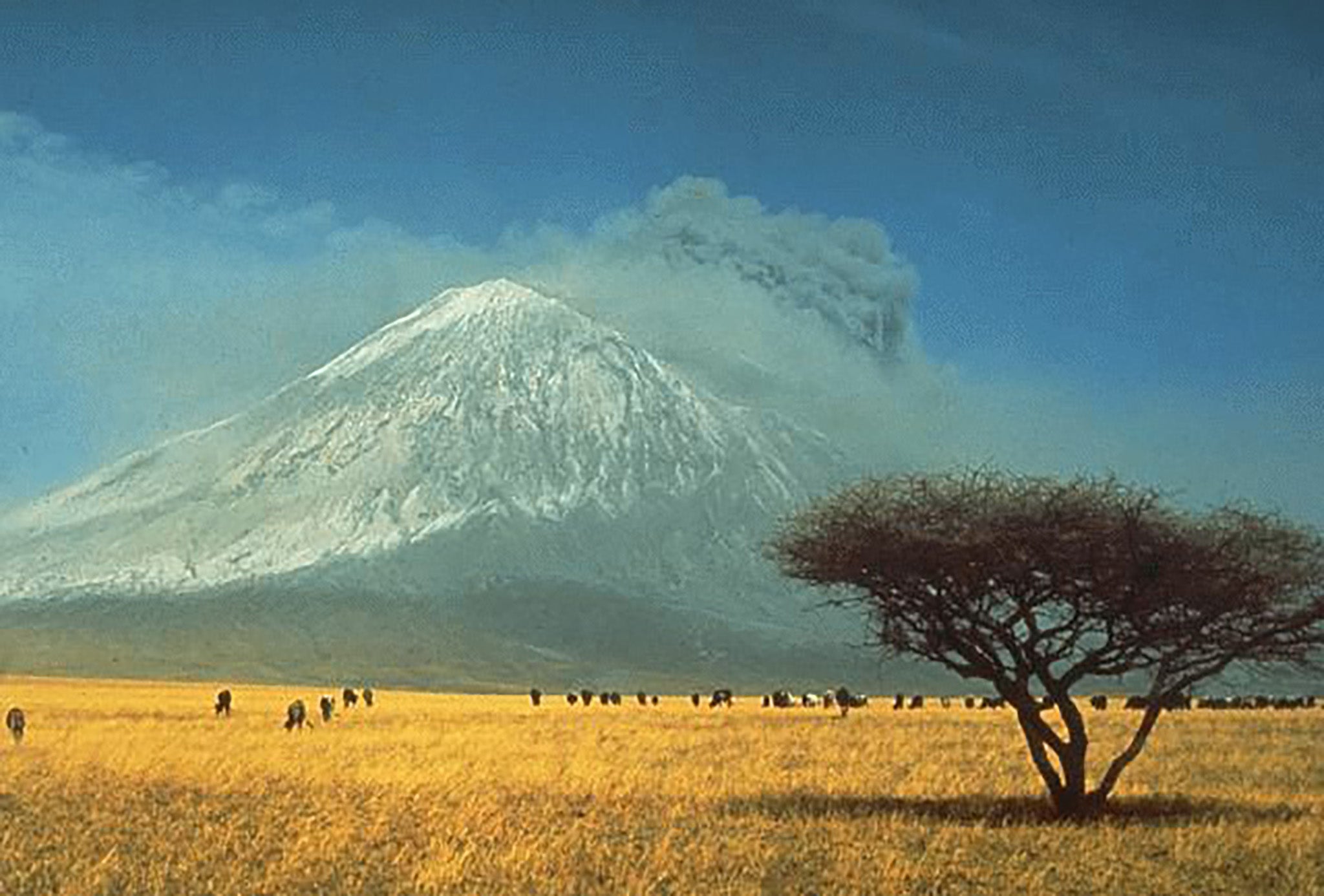
Firstly, there were two separate volcanic eruptions which spewed out ash derived from magma from two different parts of the volcano’s magma chamber.
Some days or months later, there was a major rainstorm and torrents of rain water, cascading down the volcano’s slopes, mixed with one of those two ash types to form a river of volcanic mud which flowed for at least a dozen miles along a river channel which overflowed, thus flooding a wider area with a 30cm thick layer of soft volcanic mud.
Shortly after this had occurred, the three groups of local people (and the lone runner) moved across this soft muddy landscape, leaving their footprints for posterity.
But then, several weeks later, there appears to have been a second (even more dramatic) storm, which resulted in ash from a totally different magmatic origin (but from the same volcano) mixing with rainwater and ultimately flowing along the same river channel and again overflowing, but this time burying all the (by then dried out and hardened) footprints under 40 to 75cm of volcanic mud for 13,000 years.
It is only the lucky fact that two mineralogically and texturally very different types of ash were involved (pre- and post-footprint formation) that meant that archaeologists and geologists were able to excavate, identify, reveal and study the prints.
The area between the river channel and the lake must have also been teeming with animals – which would have been hunted (probably by the men, given the apparent sex-based division of labour, now revealed by the footprints).
Scientists have discovered not just human prints across this volcanic mud landscape, but also those of antelope (19 prints), zebra (24 prints), buffalo (30 prints), a jackal and a baboon.
The site, at Engare Sero, near the Tanzanian town of Arusha, was originally discovered by a Maasai tribesman, Kongo Sakkae. He then told two of his friends in 2006 who in turn told an American conservationist, Jim Brett, who passed the information to US geologist Cynthia M Liutkus-Pierce. America’s National Geographic Society and the San Francisco-based anthropological organisation the Leakey Foundation then funded a long-term investigation of the site by scientists from more than 10 US universities.
The site, protected by fencing, is continuously guarded by government officials – and by local Maasai tribesmen who are immensely proud of their discovery
Now, after 12 years of excavations, recording, dating tests and research, the full story of a day (or two) in the lives of ordinary Africans 13,000 years ago can be told.
Join our commenting forum
Join thought-provoking conversations, follow other Independent readers and see their replies
Comments